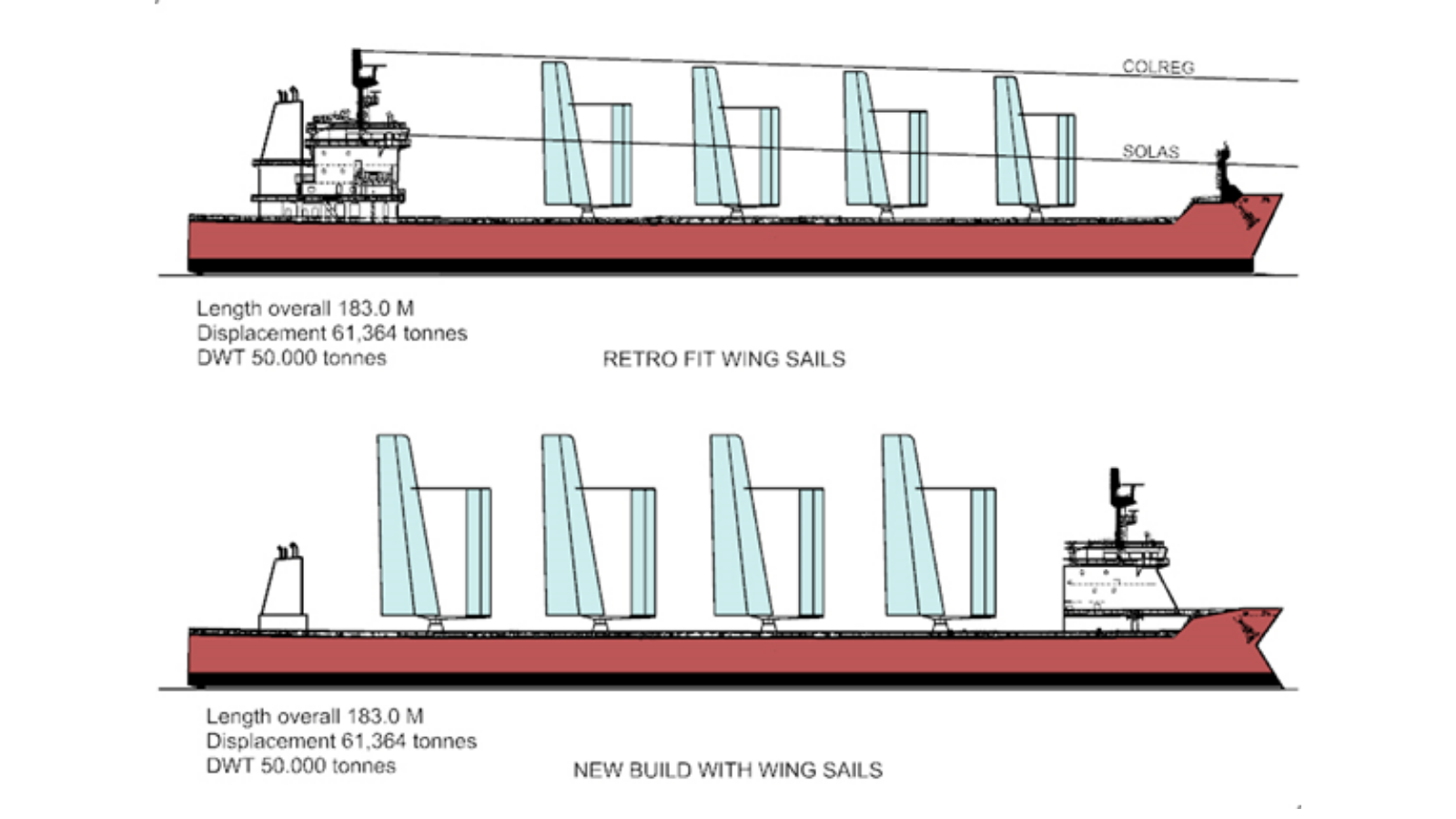Canard Wing sail

There is now a recognised problem of merchant ship's exhaust emissions and direct wind power is so far the cleanest solution and free at the point of use. The canard wing sail resulted from my proffessional experience of wing sail design and sailing on a wing sail propelled yacht.
This yacht was powered by a monoplane wind trimmed wing sail, the wing sail could maintain a constant selected angle Alpha to the apparent wind. This was made possible by a trailing air rudder.
During extreme weather we were motoring with the wing sail at zero thrust, with no progress over the ground.
With the wing sail set for minimal thrust we had up to 5 knots over the ground with perfect control.
A canard wing sail has the potential to produce about 38% more power from the same overall space as a wind trimmed wing sail with a trailing rudder, the forward canard surface controls the angle to the apparent wind (just like a trailing rudder) but also provides drive. The trailing rudder has a reverse thrust effect.
Direct wind drive is clean and without upstream energy dependent fuel processing and fuel bunkering.
A great deal of research has gone into the behaviour and performance of canard aircraft, and has shown that the commonly held behavioral and performance assessments are not conclusive, there is space for develpoment. Particularly in the co-ordinated use of flaps on the main wing and canard.
The next stage involves CFD analysis to confim and quantify the aerodynamics. This will be followed by a scaled test wing on a suitable boat, this will demonstrate the wing and its control method as well as providing test data. This will be followed by a ship sea trial with a full size wing sail.
A detailed study of wind behaviour has shown the potential for wind to change direction by 60 degrees and velocity to increase by 65%, a wind trimmed wing sail can cope with these dynamics by selecting a controlled angle Alpha to the apparent wind.
These areas of research have confirmed the advantage of high lift devices on both surfaces and the ability of a wind trimmed wing sail to respond to apparent wind changes without additional power requirements for mechanical trimming.
All of this can result in a wing sail of powerful drive and precise handling / control. This can reduce the powering demand of a ship's engine and with the expectation of high coats of zero / low emission fuel, reduce fuel requirements and fuel costs.
